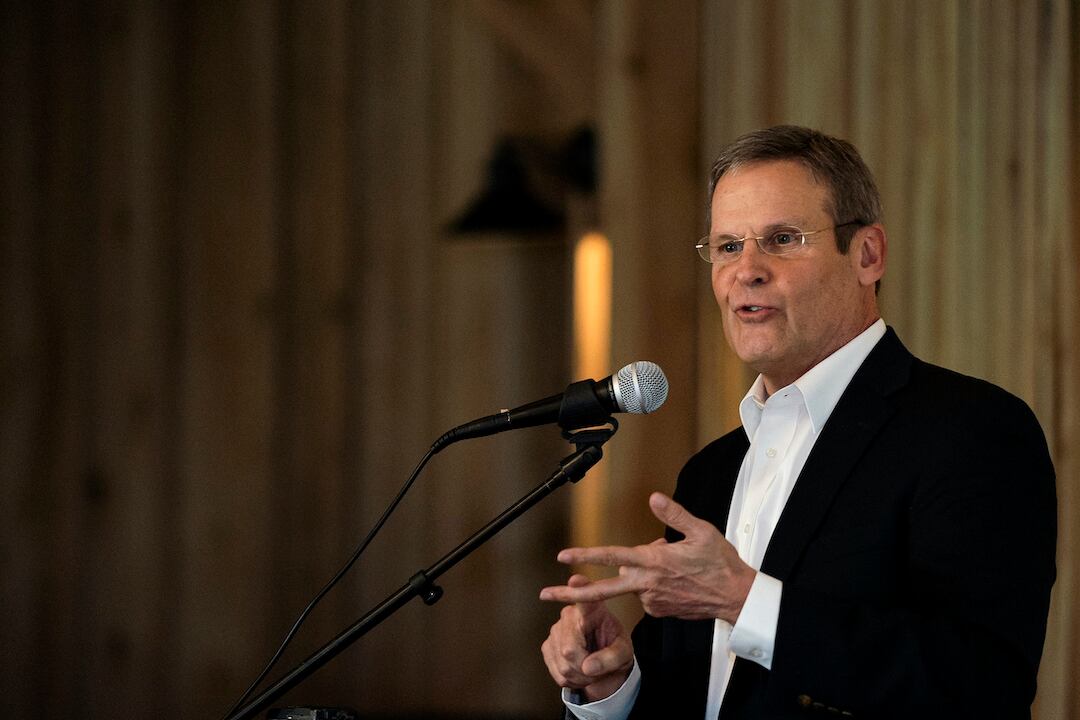Gov. Bill Lee called Friday for a “robust review” of Tennessee’s nearly 30-year-old formula for funding public education with an eye toward spending that is more focused on students than on systems.
Lee and his education chief, Penny Schwinn, also announced they will seek public input about education funding over the next 90 days and invited Tennesseans to weigh in through surveys, committees, and meetings across the state.
The goal is to come up with a proposal before the Tennessee General Assembly convenes in January. Lee said he’s looking for investment strategies that incentivize learning, engage parents in their child’s education, and ensure that all students are served at a high level, regardless of where they live or what their needs are.
Student-centered funding allows money to follow a child to his or her school based on a student’s needs. The model has been promoted for at least a decade by the conservative American Legislative Exchange Council.
Traditional funding models focus more on allocating money toward expenses such as the salaries of adults who work in a school building. But that can mean schools serving high-needs students, which often have less experienced and lower-paid teachers, get less money than schools with more affluent students.
During a news conference, Lee touted student-centered funding because it takes into consideration each student’s needs, circumstances, and learning path — and also yields more accountability.
“We ought to be able to see what we are investing in kids and what the outcomes are for those investments,” he said.
The model could force the state to do student-by-student calculations that could make it easier for Tennessee to start a private-school voucher program, which could be appealing to voucher advocates like Lee. The governor championed a voucher law during his first year in office in 2019, but a judge later overturned it and the state’s appeal is pending before the Tennessee Supreme Court.
Lee’s announcement comes as the state prepares to defend its system for funding public schools in a 6-year-old legal battle set to go to trial in February.
The case began with a lawsuit filed by Memphis-based Shelby County Schools about the challenges faced by urban districts that have a disproportionately high number of students who are people of color, have disabilities, and live in extreme poverty. The legal challenge since has expanded to pit more than half of Tennessee’s 147 school systems against the state over whether it allocates enough money to give students an adequate education.
During his press conference, Lee did not refer to the litigation or talk about whether the state is putting enough money into public education, even as Tennessee ranks near the bottom nationally in education funding and several recent studies show students tend to do better when their schools get more money.
But Lee said he anticipates proposing more education investments next year. Under his administration, he noted, the state has allocated millions of new dollars toward teacher salaries, career and technical education, literacy programs, and charter school facilities.
A review of the state’s funding formula is a bigger conversation that Lee said could be “one of the most important things that we do to shape the future of our state.”
At a cost of nearly $6 billion, K-12 education is the single largest expense in Tennessee’s state budget. Local governments contribute another $4 billion plus for public schools, with more than $1 billion coming from the federal government.
The state hasn’t significantly changed its funding formula, known as the Basic Education Program or BEP, since its adoption in 1992.
The formula is based on a complicated rubric of 46 components that determine how much state money is distributed to school systems to pay for needs ranging from salaries for teachers to textbooks, technology, and bus transportation. But districts have flexibility on how to spend that money, which explains why the BEP is considered a funding formula, not a spending plan.
“K-12 funding is complicated, it’s bureaucratic,” Lee said. “Everyone recognizes that our BEP formula is one that few understand (and) many do not like.”
In a news release announcing the review, the governor shared endorsements from more than a dozen education leaders from the legislature, school systems, philanthropic foundations, and advocacy groups.
“The timing is right in Tennessee to take a comprehensive look at the way we fund K-12 education,” Teresa Sloyan, president of the Memphis based Hyde Family Foundation, said in a statement.
Tennessee’s superintendent of the year, Ted Horrell, said student needs have changed in just the last 15 years.
“A thorough reexamination of our state’s K-12 funding system is both necessary and welcome,” said Horrell, director of the Lakeland School System, in suburban Shelby County.
Later, other education groups welcomed the review, but cited concerns.
“It is time for the state to modernize the way we fund our schools,” said JC Bowman, who leads the Professional Educators of Tennessee. “We also know, no matter how well intended, there will be ‘winners’ and ‘losers’ in any new budgeting process.”
The Education Trust in Tennessee urged the governor and Schwinn to consider increasing state funding, as well as adopting a simplified funding formula guided by student needs that aim to eliminate gaps in achievement and opportunity.
“Our state’s formula does not have simple fixes,” the group said.
The BEP formula was created after the Tennessee Supreme Court ruled the state’s previous system was inequitable based on a legal challenge by 77 small school districts. The formula was last updated in 2007 by former Gov. Phil Bredesen, but some of those revisions were rolled back in 2016 under former Gov. Bill Haslam.
In 2014, Haslam put together his own task force to try to overhaul the funding system but ultimately retreated.
“We came in and looked at turning it inside out in every way possible,” he told Chalkbeat in a 2018 interview. “But it was very difficult because, when you change it, you’re going to have winners and losers. You just are. And so the only way to change it is to do it like we did — in times when you [can] add more money to the pie.”
In recent years, Tennessee has been fully funding schools under the BEP as it’s structured, but that doesn’t mean the state is fully funding schools to meet the needs of today’s students. For instance, nearly every district hires more teachers than the BEP formula generates, and local governments have increasingly contributed more money to take up the slack.
The state’s own BEP Review Committee comes up with an annual list of shortcomings that need to be addressed and recently asked Lee to prioritize funding for more school nurses and counselors in his proposed budget for 2022-23.
This year, House GOP leaders have shown interest in using BEP funding as a possible punitive tool against some schools and districts. In January, Majority Leader William Lamberth proposed withholding state funding from districts that were sticking with remote learning during the pandemic, while Speaker Cameron Sexton threatened in August to divert money toward private school vouchers if districts issue mask mandates or shutter their school buildings.
One controversial new state law allows the commissioner of education to withhold funds from schools or districts where teachers promote certain concepts about racism, bias, and other social issues that GOP lawmakers believe are associated with critical race theory.







